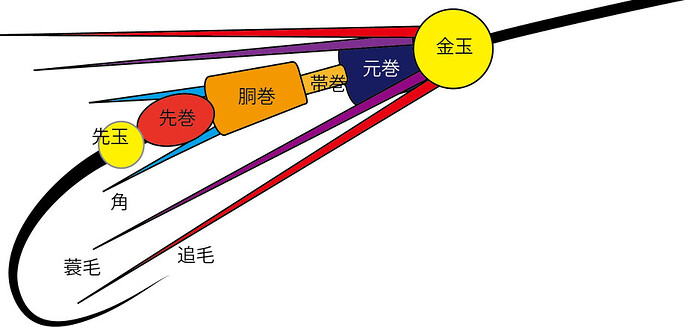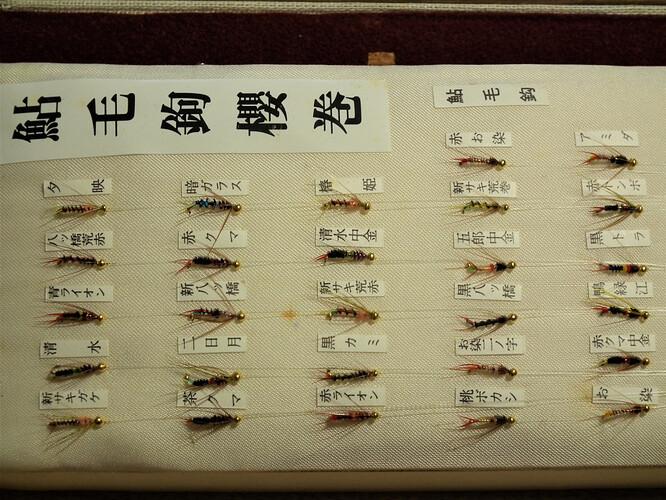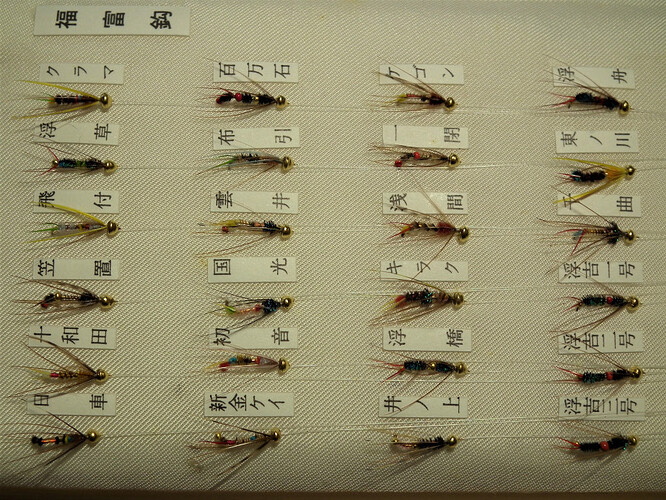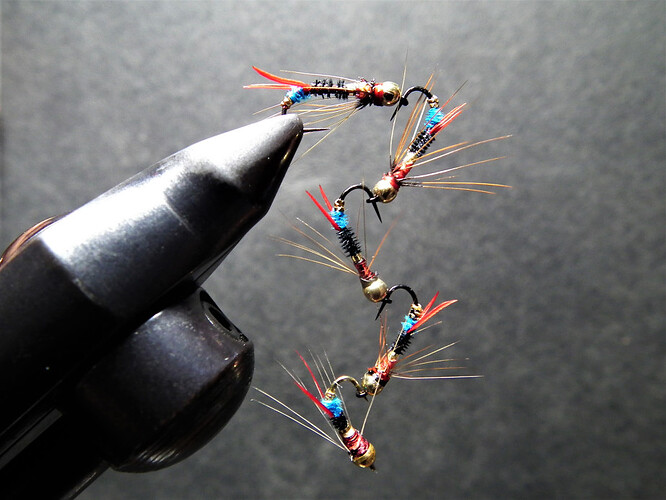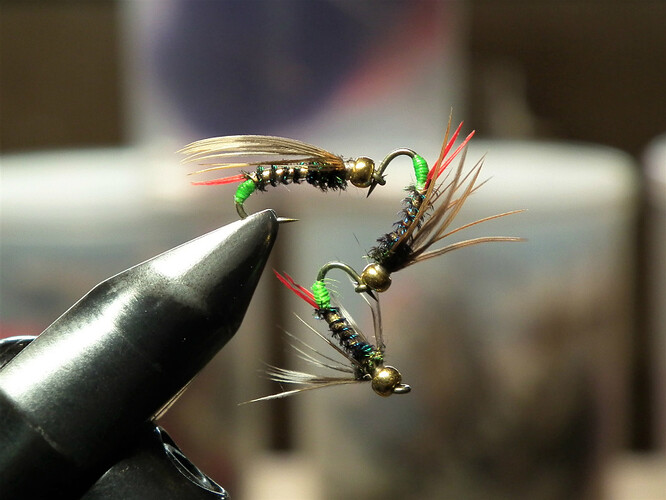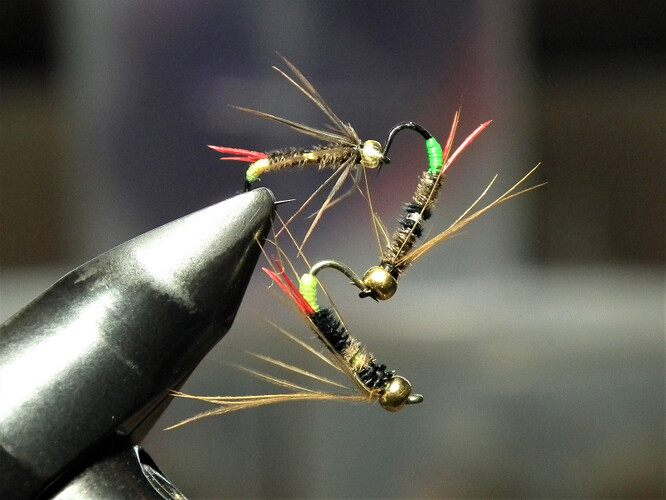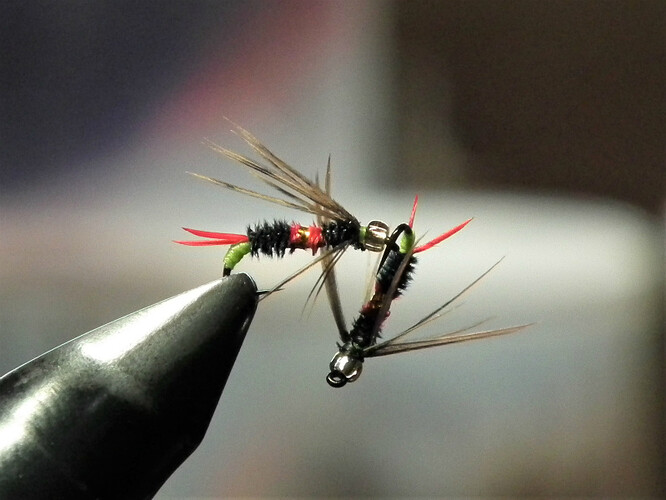For sure color choice should vary with time of day and under overcast, rainy, and falling snow conditions. Trout have cones for color vision just like we do, but cone vision (color vision) requires a lot of light for fish to use it. They convert over to rod cell vision at dusk, and use their (black, white and shades of gray vision) through out the night. Just prior to dawn, the rod cells begin receding into the retinas and the color cone cells start coming forward again for day light vision. This is a process that takes place gradually over time. Glow-In-The-Dark White materials are useful when fish are running on their Rod Cell Vision.
Flies viewed by fish against the sky tend to show up as a silhouette, whether wet or dry but, translucent fluorescent Hot Spots tend to be highly visible and can be very effective at times. Also, against the sky (even on a black moonless night) dark or black flies will be the most visible to fish. Translucence by its self is not necessarily more visible to fish when they are viewing an insect or a fly against the sky. Fish and insects tend to have light to white undersides, making them less visible to predators from below because their light undersides are less visible against the light sky.
Contrast is highly important - that’s Light on Dark and Dark on Light coloring and materials, both on the fly pattern itself and as seen against the fish’s under water background views, whether it is of aquatic plants, rocks, the sky and or the color of the water, itself.
The color of water comes in many variations of Blue, Green and Red/Brown, and varies in shade with depth - the color (what ever it is) will be lightest near the surface and become progressively darker as the fish and or your lure or fly are fished deeper in the water.
Each water color has its own set of Operative Colors that the fish can see more easily in that water color than other colors, which are governed by the Laws of Physics and not our of the fish’s preferences. Fish really do not have color preferences.
In Blue waters the Operative colors are: White, Fl-blue, Fl-green, Fl-chartreuse, Silver and Gold Plates. For short range use: Fl-pink, Fl-red and Fl-orange are the go to color decorations. Blue (clear) water is the longest fish sight range color condition, with blue and green providing the longest range fish visibility. White provides good contrast only in direct light. As you go deeper in the water and encounter indirect lighting conditions (light reflected off of the particles suspended in the water), white reflects the background colors and looses its contrast capabilities.
The Operative Colors in Green waters are: Silver Plate, Fl-orange, Fl-red, Fl-pink and Fl- chartreuse. Green water is a very short range fish visibility condition. In direct light, dark colors like dark blue, black, and purple are effective as they also show up well, particularly in warmer water temperatures.
The Operative Colors for Turbid (Red/Brown) colored waters are Gold Plate, Fl-Chartreuse, and Black, regardless of the water’s temperature. Turbid water conditions are usually the shortest fish vision range conditions of all, and the fish will usually be found in shallow water and close to the shore.
The temperature of the water effects fish vision as well, and each fish species has a preferred water temperature range - which is called its Optimum range. Water colder than optimum requires larger lures, in brighter colors, and more flash. Optimum water temps need a reduction in size, more subdued colors, and duller finishes than cold conditions do. Warm water conditions require the smallest fly sizes, the dullest finishes and the darkest colors, which is a great condition for all black flies to be used.
Colors in water change with the distance and depth of the viewer. All colors eventually turn black, with the reds going first, then orange, yellow, green and the blues last (which includes the purples). The Fluorescent colors do not color shift as quickly as the standard colors do, but even they will fade out to black eventually. As you can see, there is a lot more to this than just picking out a color you happen to like and going fishing. The two links D Walker put up explain these things very well. There are lots of color/depth charts out there. Unfortunately, most of then do not show that these same color shift conditions apply to linear distances at the same depth in the water.
Light loss in clear water can be as great as 22% in the first 1/2 inch, 45% in the first 3 feet, and 78% in 33 feet. Most T-anglers do not pay much attention to color shift considerations because our fly presentations are made quite shallowly. Muddy, cloudy and or algal stained waters can shorten the above distances by 50% or more, so this is an area that deserves far more attention than it gets. Many of you will not believe that light loss percentages could possibly run as high as they do. What accounts for the greatest losses is light being reflected off of the water’s surface and the angles of the sun as it travels across the sky from horizon to horizon. Cloudy conditions reduce light penetration in water by as much as 50%, and rain can increase that loss to 75%. Wind/wave action also contributes significantly to light losses. Most anglers have little or no knowledge of these things.
